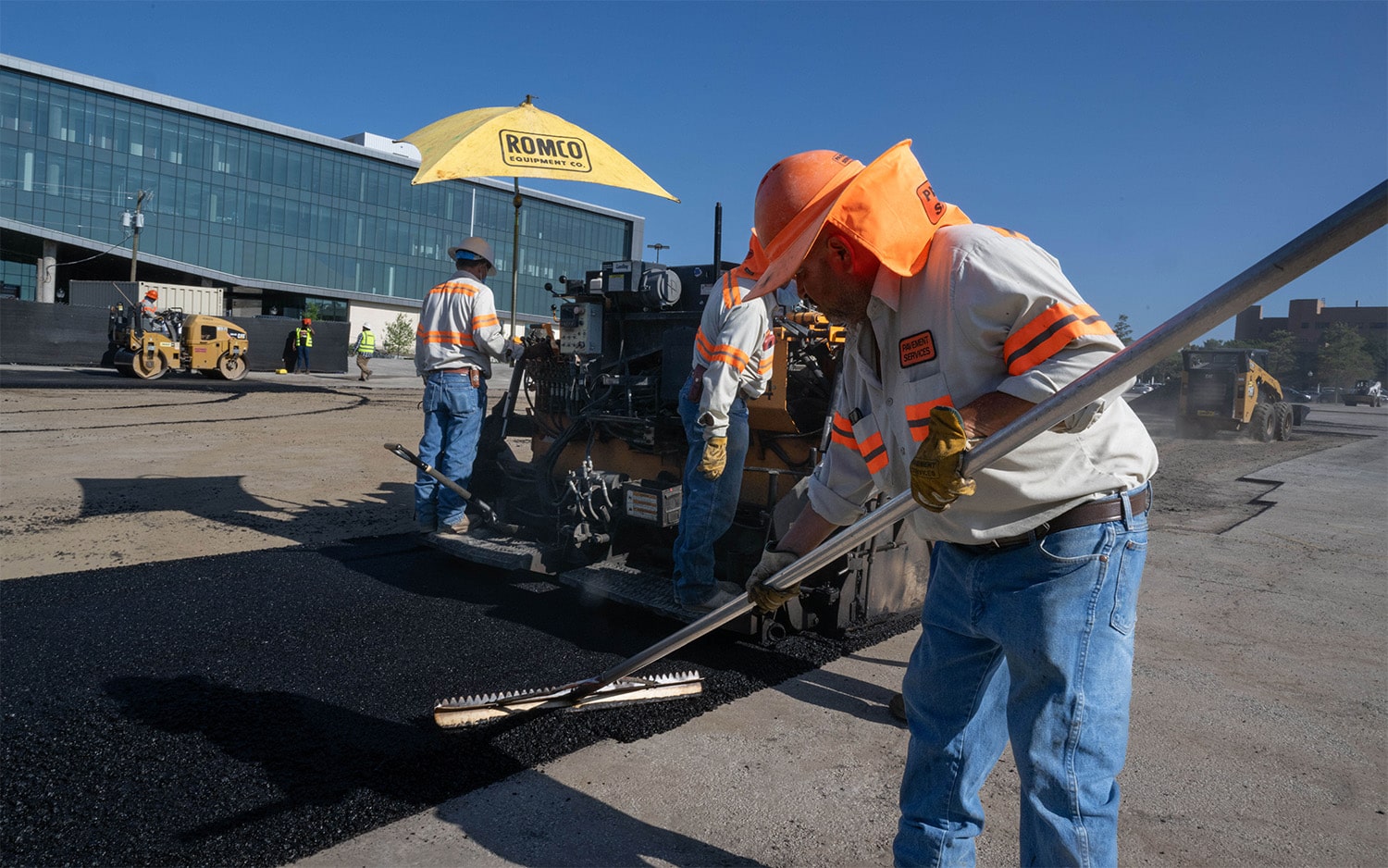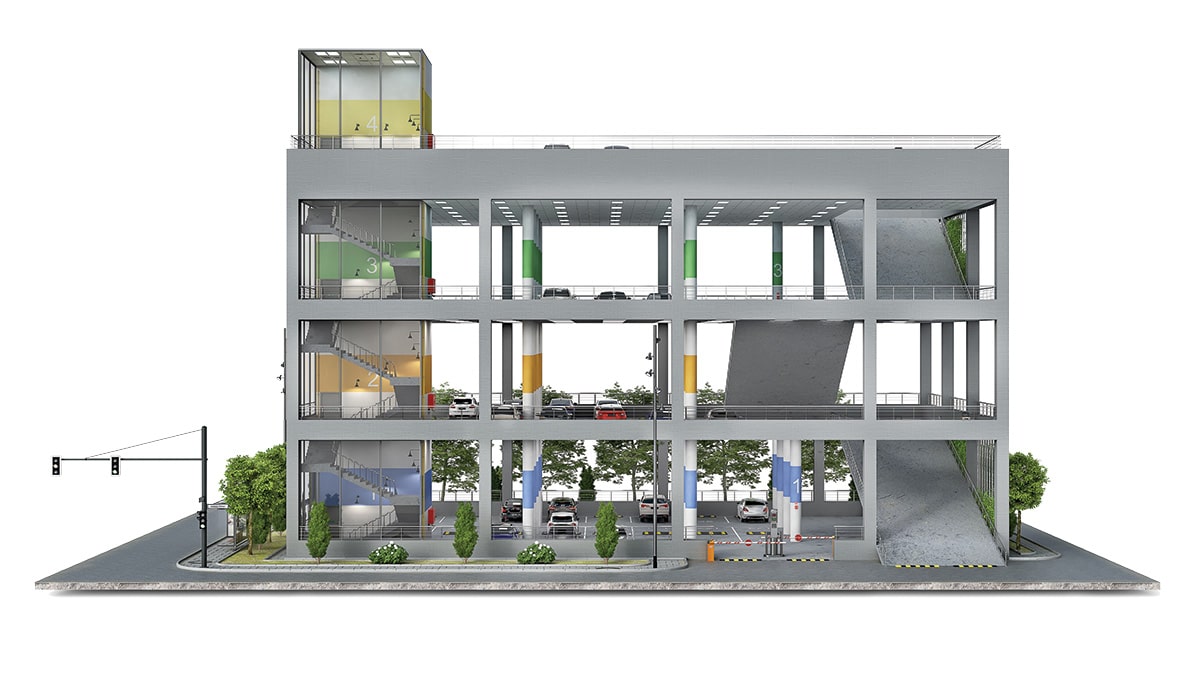
Planning for Success
Planning for Success

stock.adobe.com/ robert
The Importance of Planning in the Project Life Cycle
There are many facets to the parking and mobility industry spanning technology, operations, management and leadership, design, physical construction, and a host of others. Many of these involve tactical frontline operations, installation of equipment, or engagement with customers.
Before operations, before design, procurement, installation, and construction, on the other hand, exists the world of strategic planning. Planning is a collaborative undertaking involving data collection, discussion, research, evaluation, engagement, coordination, scenario development, and refinement with stakeholders. The purpose of planning efforts might be to develop and evaluate options, make critical decisions, or develop an implementation schedule or work plan. The scope and scale of the planning process may differ each time depending on the resources available and desired outcomes.
Table of Contents
Before any specific designs are created, before any technology is procured, and certainly before anything is actually built, conducting a thorough and thoughtful strategic planning process is a must. The importance of strategic planning in the project life cycle is a critical aspect of our work this year on IPMI’s Planning, Design, and Construction Committee. This article discusses the reasons for good strategic planning, the pitfalls of bad planning or no planning at all, provides an overview of what good strategic planning looks like, and ends with a call to the parking and mobility industry to promote fundamentals of good planning.
We welcome engagement and dialogue from our IPMI community colleagues on ways we can highlight and promote the value of thoughtful strategic planning in all our work.
Why and When Conduct Strategic Planning?
There are many reasons a comprehensive strategic planning process may be warranted. Planning is critically important when labor is hard to come by and the cost of equipment and new construction is increasing. Additionally, cities across the U.S. are seeing evolving population patterns and redevelopment, and parking and transportation demand profiles associated with work and commuting are changing. Meanwhile, new and emerging demands are being placed on our access and transportation systems, including our curb space. Budgets are constrained, and diversified sources of revenue are needed.
To ensure outcomes align with objectives, planning is critical to establishing strategic direction and functionality before rolling out changes, new initiatives, new infrastructure, or new technology. Planning may be warranted in conjunction with a large master plan or redevelopment project. Relative to (on-street and off-street) parking and mobility, below are common questions asked where strategic planning plays a critical role:
- How much parking do we need? How do we “right-size” our parking system?
- How should we integrate parking into our master planning and redevelopment efforts? How should parking be provided to accommodate new residents, office employees, and visitors?
- How do we achieve fiscal sustainability as an operation?
- How can parking be more efficiently managed or managed in a way that yields greater customer service and revenue?
- We need new parking equipment. What type of equipment and technology should we get to manage the diverse users we have in our on- and off-street parking systems?
- How do we best integrate other forms of mobility into our system?
Whatever the catalyst, a well-conceived and well-executed strategic planning process can generate support and momentum, garner feedback to help refine ideas, and set your organization up for successful implementation and project outcomes.
Common Pitfalls of Bad Planning or No Planning at All

Parking Supply and Demand Mismatch
One of the greatest eyesores in our profession is an underutilized parking facility. Without proper planning, one can find themselves with a half-full parking facility and wondering where all the parkers are. This planning pitfall leads to overspending, both on the facility’s construction and the ongoing maintenance required. And not just a few dollars – millions of dollars. Parking is very expensive to build and maintain; we want to ensure we are providing a single space that we don’t need.
The inverse problem is when you don’t have enough parking available for your patrons and employees. Lack of parking leads to frustration, a decline in visitation and retention, and a loss of revenue.
How do you ensure these problems don’t occur in your city or operation? With proper planning of course. Make sure that when projecting future parking needs, you consider adjacent land uses, user types and use patterns, and parking policies, rates, and technology. The goal is to provide the “right-sized” parking supply, whether off-street or on-street, and leverage policy, operations, and management best practices to manage it as efficiently as possible to accommodate a wide range of user types and be flexible for the long term.
Planning should be done throughout the conceptual design and development processes to understand parking needs projected from new development or land use changes, typically with an assumption of market-appropriate demand ratios for different land uses (rather than using often-antiquated minimum off-street parking requirements from zoning codes) and assumptions about shared parking between users.
Access and Customer Service Challenges
Another common consequence of inadequate planning is access and customer service challenges. Beyond the sheer number of spaces, if facilities, systems, policy changes, or technology are not well-conceived and carefully planned and executed with intent, even the most well-intentioned efforts may fail. Planning for big changes requires careful consideration of, among others, user types and patterns, equity and access for all, financial implications, and the ability to operate, fund, and maintain technologies and systems for the long term. Will the new policy meet operational objectives and promote access and equity? Can we maintain this technology for the long term? How will we fund long-term operations and maintenance? What type of data will we collect and how will we use that data to inform our evaluation of system performance? These are all important questions planning can help address.
Ensuring that your operation has provided clear education and communication to all internal and external stakeholders before changes are made and that your operation has a plan to make adjustments after “going live,” if needed, is critical.

Parking and the Master Planning Process
Parking is often overlooked during the master planning process utilized in healthcare, university, and municipal settings. However, it is one of the most important pieces of the puzzle. Understanding how future changes will affect the parking demand and parking supply location is imperative to a well-rounded master plan.
Employing parking professionals to assist in the master planning process provides many advantages. Calculating demand based upon different planning scenarios allows for right sizing of your future parking supply. It is important that one does not underbuild or overbuild the parking supply. Understanding how many parking spaces are needed will ensure that you do not have patrons circling looking for a space or that your spaces do not sit empty most of the time.
Another advantage to considering the effects on the parking system during master planning is determining if you can use valuable land for a higher-generating use than parking. Depending on the type of development you may be able to benefit from shared parking and reduce the number of spaces actually needed. Or perhaps the parking supply can be consolidated in one area, freeing up other areas for more development. Knowing how many spaces you truly need for your development and how they should be allocated informs the master plan of best land use.
Lastly, understanding where parking should be located during the different planning scenarios ensures a great master plan that your customers and employees will enjoy and appreciate for years to come. Analyzing where different users park and the associated walking distances will allow for an ideal parking operation once master planning scenarios come to fruition.
Planning and the Parking and Mobility Industry
What can parking and mobility professionals and the overall industry do to advocate for good planning? First and foremost, you must get a seat at the planning table. To do that you need to understand who the decision-makers will be and who will be seated at that proverbial table before the planning process begins. Once you know who the key players are, start building relationships with those people so you can ensure you are invited and have a participatory role in planning. We need to make sure as parking and mobility facility and system operators that we have a seat at the planning table.
Also, to guarantee a good parking plan, you must include the appropriate stakeholders and decision-makers. It is important to have the right people included and involved from the beginning. Comprehensive planning processes usually involve a core team of operator/owner personnel managing the day-to-day, as well as some form of Technical or Advisory Group of constituents that is engaged on a regular basis, in addition to engaging the broader community. Gathering feedback from those that use the system or have a part to play in the outcome will make certain that you have a well-rounded, functional parking system.
Conclusion
In the race to make changes, address perceived problems or needs, or show results, we often overlook the value of thoughtful planning. But if progress is pushed too fast at the expense of thoughtful planning, consequences are bound to arise—financially, or operationally.
This article is a call to action. A call for thoughtful and deliberate strategic planning in all our work, in the pursuit of building more equitable, efficient, sustainable (financially and otherwise), and resilient systems and communities.
This article is also a call to the broader IPMI community. We welcome your dialogue and engagement on examples of good planning, advice on how to improve planning processes, and stories of what happens when thoughtful planning is neglected. ◆
Kevin White, AICP, CAPP, is Parking and Mobility Consultant with Walker Consultants, and Co-Chair of the IPMI Planning, Design, and Construction Committee.
-
Kevin White, CAPP, AICPhttps://parking-mobility-magazine.org/author/kevin-white-capp-aicp/November 8, 2021
-
Kevin White, CAPP, AICPhttps://parking-mobility-magazine.org/author/kevin-white-capp-aicp/April 9, 2022
-
Kevin White, CAPP, AICPhttps://parking-mobility-magazine.org/author/kevin-white-capp-aicp/February 15, 2023
Jaime Snyder, CAPP, is Senior Parking Consultant with Walter P Moore & Associates and a member of the IPMI Planning, Design, and Construction Committee.
-
Jaime Snyder, CAPPhttps://parking-mobility-magazine.org/author/jaime-snyder-capp-2/March 30, 2023


From the Editor
The Power of Planning, Design & Construction

Rethinking Parking Facility Design
How Electric Cars are Changing the Architecture of Parking.









